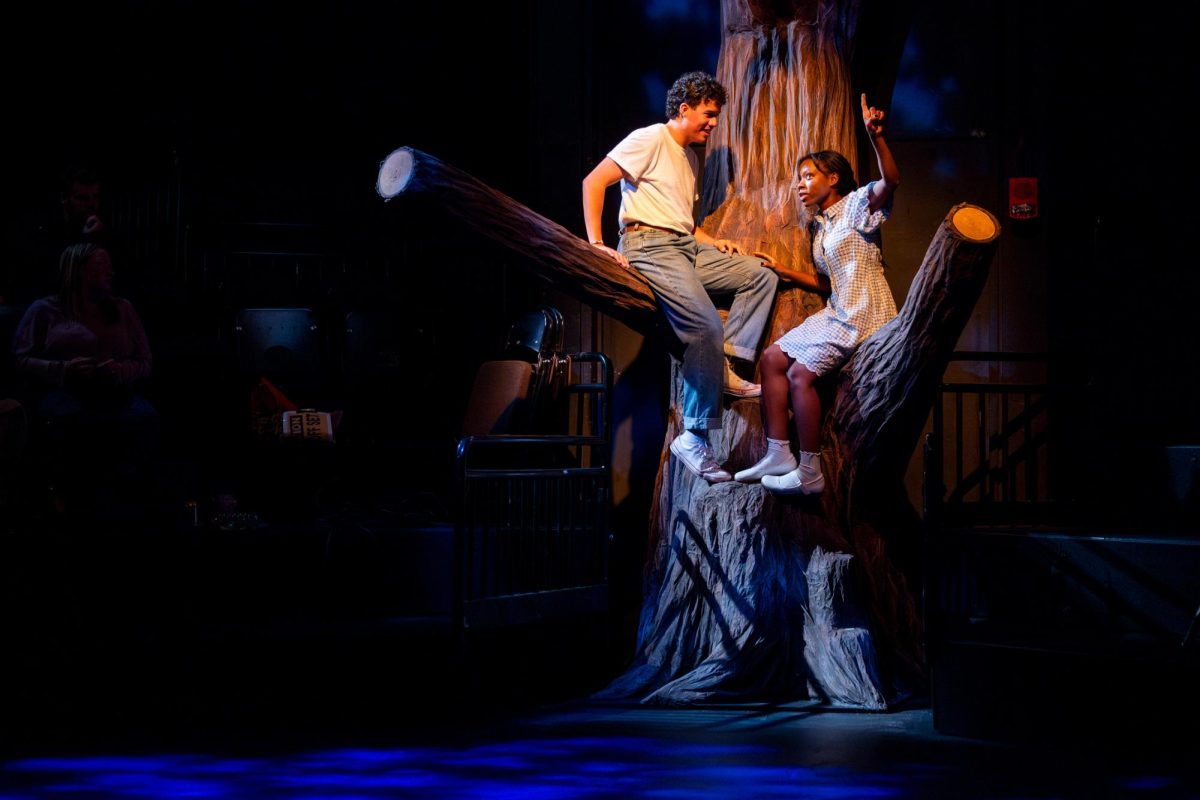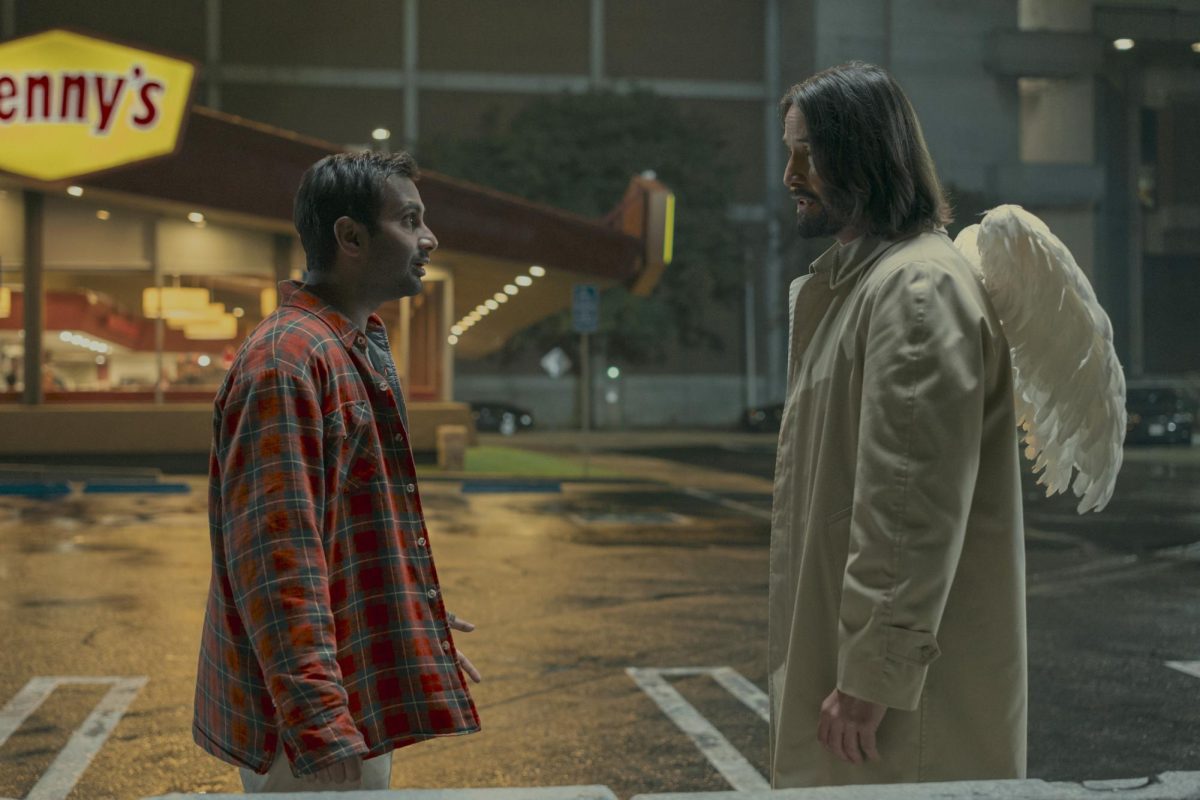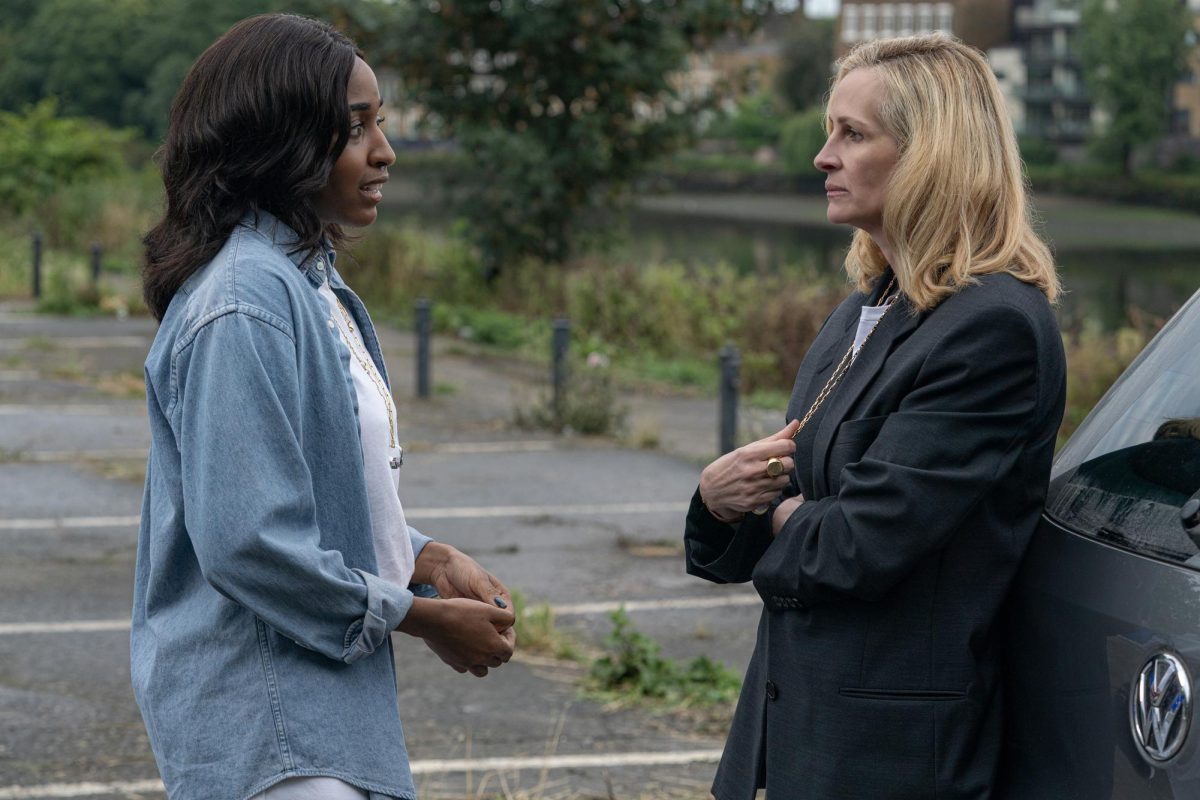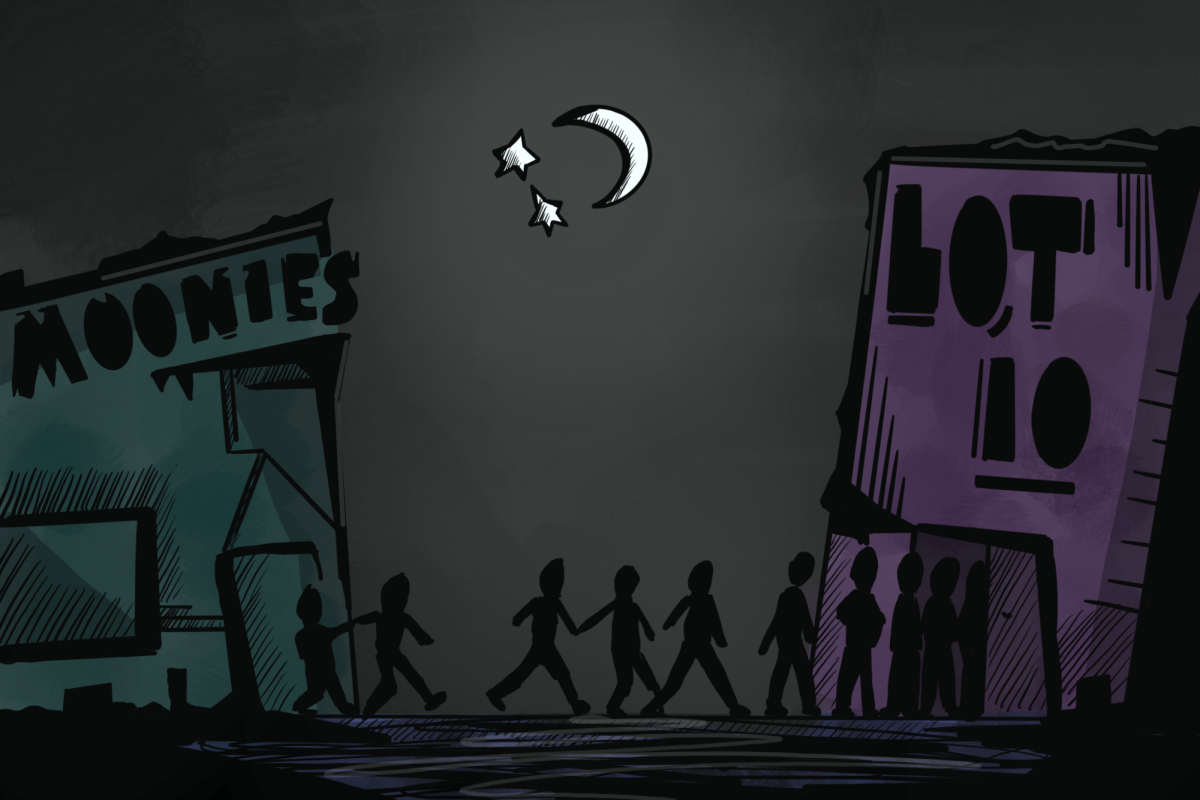2.5 out of 5.0 stars
Attempting to build on Barry Jenkins impressive directing resume, “Mufasa: The Lion King” tells the prequel story of Disney’s “The Lion King.” Continuing the photo-realistic style in Disney’s 2019 remake of the original movie, Jenkins directs the tale of Mufasa and Scar’s relationship and how their conflict came to be. The premise, while worthy of a big-screen debut, unfortunately fails to live up to the quality of the original movie from the ‘90s and its characters, much like how the live-action movie series began.
The film’s plot follows a dual timeline format, as the movie starts right where the original left off. Simba (Donald Glover) reigns as king of Pride Rock, and his daughter, Kiara (Blue Ivy Carter), listens to the story of her grandfather from Rafiki (John Kani), Simba’s mandril advisor and Mufasa’s before him. As Rafiki begins, the movie cuts to Mufasa (Aaron Pierre) and his early life. From childhood to early adult life, Mufasa’s journey from outcast to the first ruler of Pride Rock makes up the bulk of the movie’s runtime. This dual timeline works well for the story Jenkins wants to tell because Rafiki’s account inspires Kiara to overcome her own fears, much like her grandfather.
While Mufasa’s journey provides the young lioness with fuel for her emerging bravery, the actual events themselves feature characters that are oftentimes inconsistent and confused in how they act. These bizarre character choices are a result of unclear character arcs.
Unlike other entries in Jenkins’ directorial career such as “Moonlight” and “If Beale Street Could Talk,” the characters in the movie feel very underdeveloped. They make choices that, without proper buildup in the story, feel jaded and disconnected from who they are established to be in the film. Scar, known as Taka (Kelvin Harrison Jr.) throughout the film, is the biggest example of this, betraying Mufasa for the main villain that has overtly wanted Taka dead. This comes at the revelation of Mufasa having feelings for Sarabi (Tiffany Boone), a lioness who Taka tried to win over in previous scenes.
The betrayal does not make sense because Mufasa and Taka’s relationship had been the strongest factor in both of their lives. As a child, Taka loses a competition with Mufasa on purpose in order for Mufasa to survive. They are raised together in the first act and Taka makes a habit of saving Mufasa’s life, three times up until his betrayal. He saves Mufasa twice more during the finale alone. Taka betraying his lifelong closest friend for a lioness he has known for a short amount of time feels incredibly forced. The writer clearly tries to push Taka into the direction of becoming Scar when Taka has been established to be a character that would not willingly take that direction.
Toward the end of the movie, the tensions and stakes rise considerably with the possibility of Mufasa’s death. There are multiple instances of Taka saving his brother from death, oftentimes in the exact scenario that brought upon Mufasa’s death in the original film. This reference falls flat for a few reasons, the first being the cheapness of using it not once, but twice for dramatic effect. The reference does not point to anything potentially meaningful in their characters and their individual arcs, but rather serves as a reminder that the original movie exists.
The reference’s inclusion also works in their disfavor. The audience knows that neither Mufasa, Taka or Sarabi will die throughout the movie. The same goes for Rafiki and Zazu (Preston Nyman). The audience struggles to feel for the characters placed in life-or-death scenarios when they already know the latter physically cannot happen. They must stay alive for the first movie to play out, and thus tension and stakes are completely undercut.
The photorealistic style of the animation, while improved from the previous live-action adaptation of the source, still fails to capture the emotions required from the story’s attempt at a dramatic piece. A lion’s face, specifically Mufasa’s, tries to portray the complex facial emotions that come with realizing every home he has ever been a part of has collapsed and that he may never find a home in his life. The animation is simply unable to accomplish this task.
Much like with every other character, an animal’s realistic face cannot replicate human emotions. Taka/Scar feels betrayed by Mufasa through his words, but the audience cannot grasp this feeling with just motion capture. The movie suffers from this style greatly, as opposed to the refined 2D animation style of the original “Lion King”. The viewer has a hard time feeling empathy for lions that appear to be, through their facial expressions, completely fine.
When the animation itself falters, the voice acting steps in to pick up the slack. Pierre does a fantastic job voice acting for Mufasa, and Harrison Jr’s take on Taka/Scar elevates the character despite the writing’s flaws.
Even with the strength of the premise, “Mufasa: The Lion King” ultimately fails to roar to life. A collection of fantastic voice acting and a well-worked format are not enough to save the film from poor characters and a complete lack of stakes.










Charlie Spencer • Jan 27, 2025 at 4:25 am
This review is, in my opinion, poor. First of all, your idea that idea that a guy won’t betray his best friend/brother for girl he hardly knows?!!… All I can say is that you don’t know how irrational and psychotic men can be when it comes to women. As for your critique of the facial expressions, you don’t need them! The voice acting is enough. Also, do you know how creepy it would be to see Lion’s with facial expressions in live action? Very creepy. I also disagree with what you’re saying about the references to Mufasa’s death. They reference it to make us think about the fact that the two of them aren’t enemies (even at the end when it was touch and go whether Taka would save Mufasa) and I have to say, this is had quite an impact for me as a viewer. In short, I think your review is poor and unfair analysis of this brilliant movie.